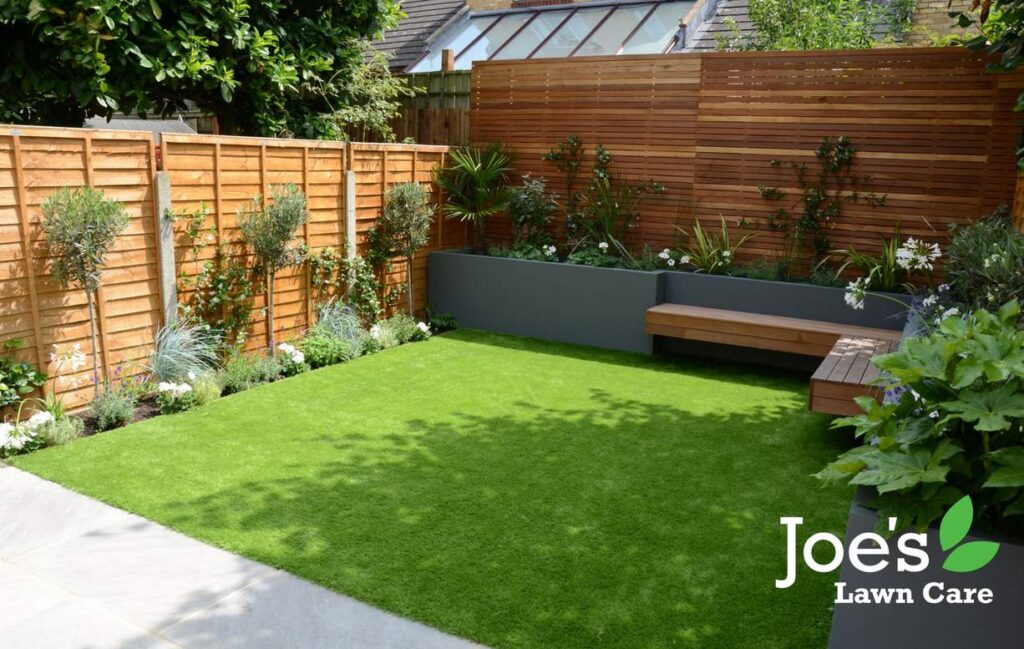Lawn Care For Little Urban Lawns
The other day, while sat in a long line of traffic with the windows rolled down in futile search for a light breeze, I overheard a little boy quizzing his Dad on the usual stuff, things like:
- Dad, have you ever been a pirate?
- Daaad, in the olden days, was everything black and white?
- Dad, why can’t I see my own eyes?
- Daaaad, can we put my sister back so I can have a brother?
- Dad, where does the sun go when it gets dark?
It was the sort of conversation you want to overhear when you’re crawling along a road so hot you can see the tarmac melting and you can’t cope with the sound of radio adverts anymore. But then came a question that got my mind whirring and stirring like a cake mixer:
“Dad, what’s the difference between a countryside lawn and a city lawn?”
“One’s bigger.” The Dad replied, tapping the steering wheel with all of his fingers, his head leaning to the right so that he could get a better look at the fact we were going nowhere.
Anyway, there is a point to this story (other than the fact kids are hilarious) and it’s this: Yes, the main difference between an urban and middle-of-nowhere lawn is size, but this difference changes absolutely everything about a small lawn’s wants and needs, or maintenance and management as I like to call it.
When you think about it for more than a moment, it makes sense. Cities, towns and built up areas in general are almost always full of tall trees and they’re totally overwhelmed by some form of concrete, which creates little micro-climates, changing the condition so much that smaller lawns tend to need a lawn care program that’s been slightly tailored.
So, without further ado, let’s delve into the untouched world of small lawn management:

1. It All Starts With The Right Seed
“When you’ve seen one type of grass, you’ve seen ‘em all, right?” Well, actually, that’s wrong. There are loads of different types of grass. Loads and loads. Which is why you should try and pick a species that’s suited to the conditions and location of your lawn. Typically, that means opting for grass that loves the shade (a bit like me) and is incredibly tolerant to drought (not like me). It doesn’t matter if you’ve got a half-pint-size lawn that’s in the shade for 23.5 hours a day, or a rooftop terrace that soaks up too much sun. You should pop into your local gardening shop or nursery and ask someone which grass species will have the best chance of surviving and thriving in your location.
2. Trees Are Great At Acting Innocent
It’s easy to fall in love with the large trees in or around your little slice of the great outdoors (especially this summer, which seems to have lasted almost 11 years). They’re the unsung heroes that have turned your scorching postage stamp into an oasis of cool air. The problem is it comes at a bit of a cost because your large, shade-serving trees are also in competition with your lawn. Tussling for water and restricting the flow of air, while that shade you’ve been worshipping is actually making it near impossible for your lawn to grow up and the roots grow down.
Of course, where there is a lawn care problem, there’s is also a lawn care solution. So, first things first, I would say: choose shade-loving grass. That’s how to really boost your lawn’s hopes of living a lush life. If, however, that sounds like a bit too much effort (and we get where you’re coming from), the other thing you can do is set about pruning your trees and then revelling in the euphoria. A euphoria that is more sunlight and better air flow. Oh, and just so you know, a bit of pruning isn’t just good for your lawn, it’s better for the tree too. So, if you were worried about choosing sides, don’t be. You’ll still be a totally impartial homeowner.

3. Time To Tweak Your Gardening Routine
Don’t worry, I’m not going to suggest anything so drastic it draws out an involuntary gasp. Not at all. After all, it’s the little things that tend to make the biggest difference. For example, when it comes to fertilising your patch of grass, using a spreader will be more counterproductive than Donald Trump’s Presidency. It makes much more sense to use a drop spreader, or even go with some liquid applications. Both of which will be 438% more effective on your smaller lawn (okay, we made up that percentage, but you get the point).
The other little change you should consider making is to your sprinkler. There is no point wasting water and having to pay through the roof at the end of the month when most of it’s been overspray. That’s where a cheeky little misting attachment can revolutionise your life. That or you could head into your shed-slash-garage and spend forty-five minutes looking for your racing green watering can and give your lawn a good old-fashioned hand-water. As long as you are lightly watering your lawn each morning and every night, how you do it becomes a tad irrelevant.
4. How You Mow Matters Too
Yup. Believe it or not, even the way you push your mower up and down your lawn needs to be rethought when you’ve got an “urban lawn”. First off, don’t bother using a mower that’s powered by fossil fuels. Not only do they sap a shed of storage space, they probably take longer to set up and get started than it will take you to trim your lawn. And then there are the environmental reasons too (spoiler alert: petrol and diesel aren’t great for the planet). Instead, it makes more sense to use a) an electric mower you can fold away into a neat little package or b) just give your grass a whack with a string trimmer and then get your rake out.
The other thing you should do is: mow high and mow less. With so much to battle against, from loads of shade to lots of concrete, your grass might struggle to develop a deep root system. So, to give it the best chance of looking like an emerald green shag pile rug… Set your mower’s deck to at least 2.5 inches and only mow when you absolutely have to. This will help your grass retain more moisture, overcome any common lawn care problems and get nice thick, juicy roots.

5. Your Normal Lawn Care Practises, But Scaled Down
The rest of your lawn care practices should mimic your large lawn counterparts in every way. Just scaled down a bit. That’s because every lawn in the Milky Way will benefit from soil tests. The occasional overseeding. A spot of aeration. Some scarification and, of course, a dollop of top dressing too.
In fact – and we’re not just saying this because we’re a lawn care company (and the UK’s fastest growing independent at that). But hiring a lawn care company could make a lot of sense if you’re in an urban environment. Whether it’s just for specific jobs like fertilising or aeration, or your general week-by-week lawn care needs.
Thanks for reading Lawn Care For Little Urban Lawns! For more lawn care tips and tricks, follow us on Facebook and Instagram.





